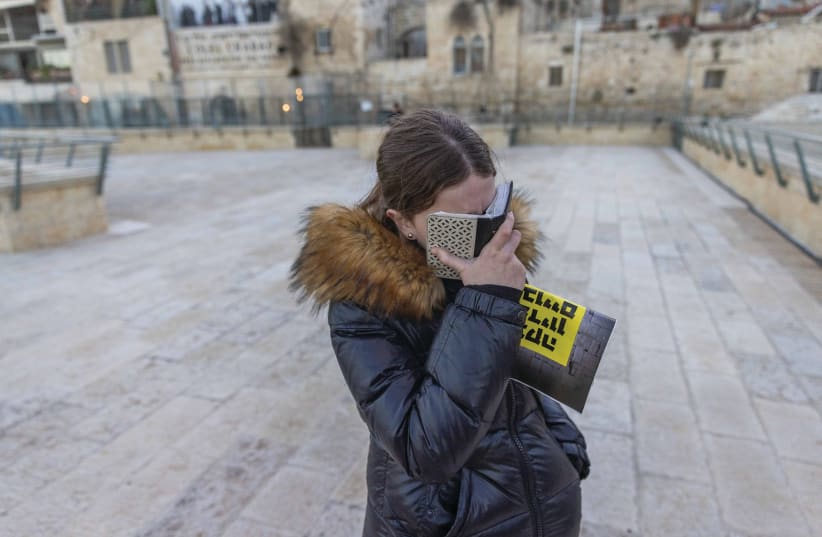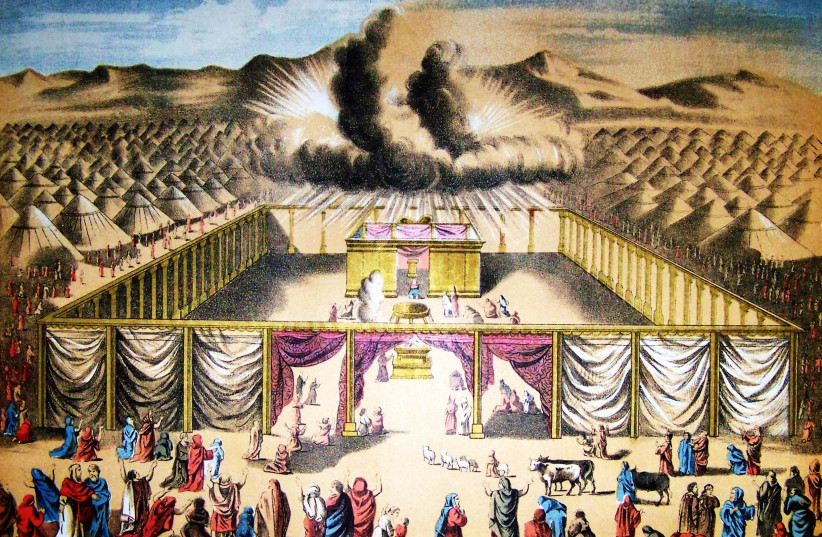Parashat Truma deals extensively with detailing the instructions for the construction of the Mishkan (Tabernacle) – the temporary sanctuary that accompanied the Israelites in the desert and in the Land of Israel until the construction of the Temple in Jerusalem – and the special vessels placed within it: the Ark of the Covenant, the Table, the Menorah, the Altar, and more.
The detail is lengthy and precise, ranging from the materials from which the Tabernacle will be made to the precise quantities and measurements of each item. All of this is intended for the following purpose: “And let them make Me a sanctuary, that I may dwell among them.” God desires to dwell among the people of Israel, and therefore He commands them to build Him a sanctuary.
Of course, there is no suspicion that this implies assigning to God material features. In the Book of Kings, much work is described that was done in the days of King Solomon for the construction of the Temple in Jerusalem. Afterward, an impressive prayer of Solomon’s is presented in which he repeatedly declares that the House he is building for God does not “contain” the transcendent and unknowable God but rather serves as a certain representation intended for man: a place for man to encounter God.
But Solomon was not the first to seek to build the Temple. Before him, it was his father, King David, who conquered the city of Jerusalem and chose the Temple Mount to build the Temple there. David longed to merit to be the builder of the Temple as he describes in his song in the Book of Psalms:
“Surely I will not come into the tent of my house, nor go up into the bed that is spread for me; I will not give sleep to my eyes nor slumber to my eyelids until I find a place for the Lord, a dwelling place for the Mighty One of Jacob” (Psalms 132:3-5).
David also made practical preparations for the construction of the Temple. In the Book of Chronicles – the last and latest book in the Tanach – his farewell to the people and to Solomon his son before his death is recounted, when a significant portion of his farewell speech is devoted to the subject of building the Temple. At the end of his words, David presents to Solomon a detailed architectural plan for the Temple that Solomon is destined to build.
Why didn't David build the Temple?
WHY DID David, who so longed to build the Temple, not build it himself but leave the task to his son Solomon?
It is told that David wanted to build the Temple and thus turned to the prophet Nathan and said to him: “See now, I dwell in a house of cedar, but the ark of God dwells within curtains.” The conclusion is clear: A Temple must be built that is at least as honorable and magnificent as a royal palace. Nathan replied positively and allowed him to carry out his wish. But afterward, God revealed Himself to Nathan and rejected David’s request.
The reason for the refusal written in the Book of Samuel is not clear enough, but in the Book of Chronicles, at the beginning of David’s farewell to Solomon, words of David are quoted that shed light on God’s negative response to David:
“Then David said to Solomon, “My son, as for me, it was in my heart to build a House to the name of the Lord my God; but the word of the Lord came to me, saying, ‘You have shed much blood and have waged great wars; you shall not build a House in My name because you have shed much blood on the earth before Me’” (I Chronicles 22:7-8).
The refusal was principled. David spent most of his life engaged in wars with enemies. These wars were justified, undoubtedly. There is no criticism here of David’s actions. But in the end, David’s hands were engaged in shedding blood, and these hands cannot engage in building the House of God. The Temple is a place of peace and universal unity. It is intended, as the prophet Isaiah states, to be a place to which all nations will flow, and the result of this enlightenment will be “Nation shall not lift up sword against nation, neither shall they learn war anymore.”
The aspiration to build the Temple and fulfill the commandment “And they shall make Me a sanctuary, and I will dwell among them” This aspiration is accompanied by a prayer for peace – first and foremost among us, within the Jewish people, and also between us and the other nations – so that through unity and faith in God, they strive for peace and to prevent bloodshed so that we may be worthy of realizing the aspiration and vision: “For out of Zion shall go forth the law, and the word of God from Jerusalem.” ■
The writer is rabbi of the Western Wall and holy sites.

